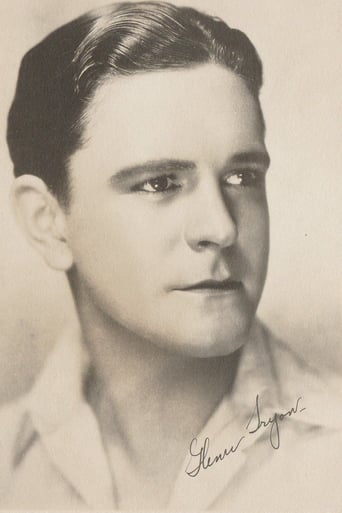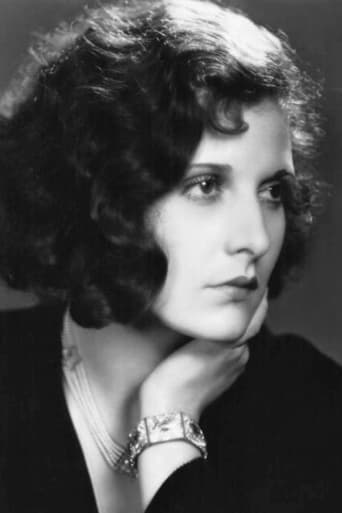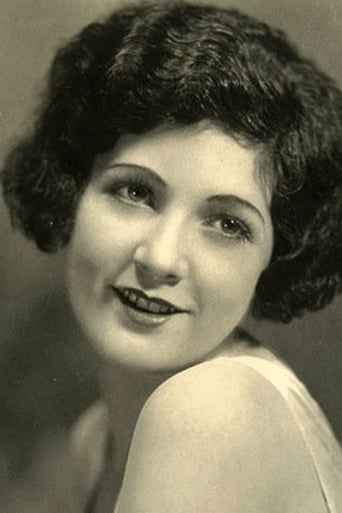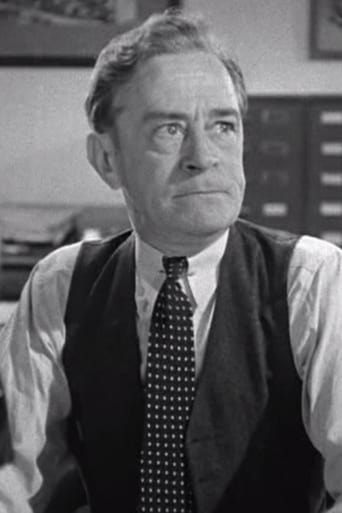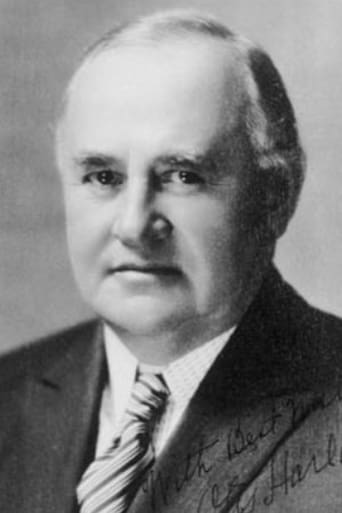WasAnnon
Slow pace in the most part of the movie.
Humbersi
The first must-see film of the year.
Griff Lees
Very good movie overall, highly recommended. Most of the negative reviews don't have any merit and are all pollitically based. Give this movie a chance at least, and it might give you a different perspective.
Kien Navarro
Exactly the movie you think it is, but not the movie you want it to be.
MisterWhiplash
Broadway represents what you practically picture when you think of the typical, or in this case perhaps proto-typical or quintessential or one of those highfalutin terms - of the late 20's/early 30's back-stage musical. This isn't to say that it's entirely like something of the quality of, say, 42nd Street or other Busby Berkley musicals, it doesn't quite have that standard of artistry. But it has the edge, via director Paul Fejos, of containing a certain excitement to its plot by it being really kicked off by a behind- closed-doors murder (let's just take him out as if the guy is drunk, even though he's dead) and it has a good gangster edge to it. Maybe not fully that, but it has that criminal side that makes it more than just the standard back-stage drama. There's some romance too, between one of the guys that I think runs the show or runs the club or something like that, and one of the dancing/singing girls for the show. It feels like we know it will have a tragic outcome in some way or another, but we can't be totally sure how it will unfold (one may have an idea, and you may be correct, but who will eventually take out who turns out to be a real surprise). The main mark against it is that some of the dialog and performances haven't aged too amazingly, but then context is in order: this was one of the earliest tries at not just a sound picture but a sound musical, and in that sense it's phenomenally directed by nature of the movement of the camera. Of course one can tell when at certain times it has to stop dead and the actors are there on set for the sake of the microphone getting their dialog as carefully as possible. Also, as one might expect, some (or many) of the performances are more geared for the stage, how the dialog is spoken especially. What elevates it is the joy in Fejos's direction and that he doesn't get *bad* performances exactly out of his players (at worst they're just mediocre or forgettable). He also brings a certain authenticity, or just a 'movie' authenticity if that makes sense, to the feel of this back-stage drama and how everything does keep moving story-wise. It may run a minute or two too long, but the finale makes it all worth it as the filmmakers use an early two- strip technicolor for the big finale number "Sing a Little Love Song", which even has a couple of laughs simply by featuring the 'bitching-rest-face' performer (who does have a pivotal role in the climax just before this). This is probably the must-see part of the movie, and this comes after what has been a more than competently made musical that has the songs worked in to the story, not those that come inorganically, and if you have the patience for the technical imperfections as they were working things out, it's fun.
earlytalkie
I finally saw this film after hearing about it for years. It has good photography for an early talkie, the art deco settings and the imaginative costumes are lovely to behold, and the acting and direction in the dialog scenes are putrid. Paul Fejos may have been a great visual director in silents, and, as I say, this film does have good visuals, but there are so many bad dialogue scenes, mainly by the men involved, that this becomes just another bad early talkie. Evelyn Brent, whom I admired so much in THE SILVER HORDE, has little to do here but scowl in her performance. Betty Francisco, as Mazie, comes off best of the females. None of the men turn in good performances, with the prize for worst acting going to the actor playing McCorn, the cop. He reads his lines in a flat monotone while he looks off camera as if for cue cards. The sound recording is good except for one scene when it totally drops out for a few seconds, and the print quality is pretty good, save for the Technicolor finale which looks pretty bad. This was apparently a hit when it came out. Practically anything with sound was in 1929, but take away the pretty trappings, and you have a pot boiler that would have lost money if, say, Tiffany had made it. Watching this suddenly elevates films like THE Broadway MELODY and ON WITH THE SHOW! to absolute greatness.
calvinnme
This musical was directed by Paul Fejos at Universal Studios in 1929. There were so many musical films made in 1929 with the title "Broadway" in them, thus you might ask - why is this one unique? For one its director was a Hungarian bacteriologist by trade who dabbled in film and is famous in particular for two late 20's films - 1928's "Lonesome" and this film, "Broadway". Fejos made a crane the actual star of the picture. It was a custom built contraption that allowed the camera to sweep about the nightclub in which most of the movie was set. Most early sound films were very static by necessity, and Fejos wanted his musical to have some of the fluid motion of the late silent era restored. However, during these sweeping scenes, Fejos had to use silent film and then dub over it with recorded sound. This gives these parts of the film a surreal and disembodied quality.The film is like "Faust" meets "Lights of New York" in that the film opens with a metallic-painted giant stalking about Broadway at night, filling his glass with ale, and gesturing for the residents of Broadway to join him in his debauchery. The film then moves to a nightclub where the story is largely unremarkable. It's basically just another gangster film set in a nightclub punctuated with two-strip Technicolor musical numbers. "Hitting the Ceiling" is the best and most remembered of these moments. My main complaint about this film is that Evelyn Brent looks so bored during most of it. She could and did turn in good performances in the early talkie era, so I'm not sure why with all of the intrigue that is lurking about the Paradise Club her reaction seems to be that it's just in a day's work.The film was shot both silent and in sound, and has never been on VHS or DVD. The silent version I saw had Technicolor, and the sound version I saw was in black and white. I don't think that a talking version with color still exists. Some people have attempted to dub the speech of the talkie version into the silent version to get the maximum effect of the music and the color, but what I've seen hasn't worked too well. The film's director, Paul Fejos, decided to leave the film industry shortly after "Broadway" was complete due to his dislike of the people running Universal. Instead he embarked on a career in anthropology, where he became a leader in his field. An unusual end to the film career of a man who made very unusual films.
bbmtwist
Broadway now exists in two versions - the 88 minute visual silent with Hungarian subtitles and the 105 minute soundtrack only of the talking version (inflated for production numbers).I was most impressed with the cinematography (Hal Mohr) in the scenes that could be filmed silently with soundtrack added later. The tracking and crane shots are amazing for any period, but especially for an early talkie; about an hour into the silent print, a morning after shot reveals the enormous night club set being cleaned by custodians with an almost surrealistically mobile camera. In contrast the scenes including dialogue are filmed rather conventionally with a non-moving camera.The night club set is a stunner - looks like it took up an entire sound stage - kudos to Art Director Charles D. Hall. There are only a handful of other sets, mostly small backstage interiors.The plot is very simplistic. I won't reveal any details as I don't want to provide spoilers. However, I can reveal this. There are two parallel plot lines - one involving a hoofer and his romance with one of the chorus girls, and the other a reel one murder involving management and bootlegging that relies on feelings of guilt and paranoia to bring the guilty party to heel.Glenn Tryon is a lousy singer, but Evelyn Brent's superb performance as Pearl carries the film.As a piece of cinematic history, it's a treasure to find. Now if the talking version pictorial elements surface, we'll be able to really compare the two.
